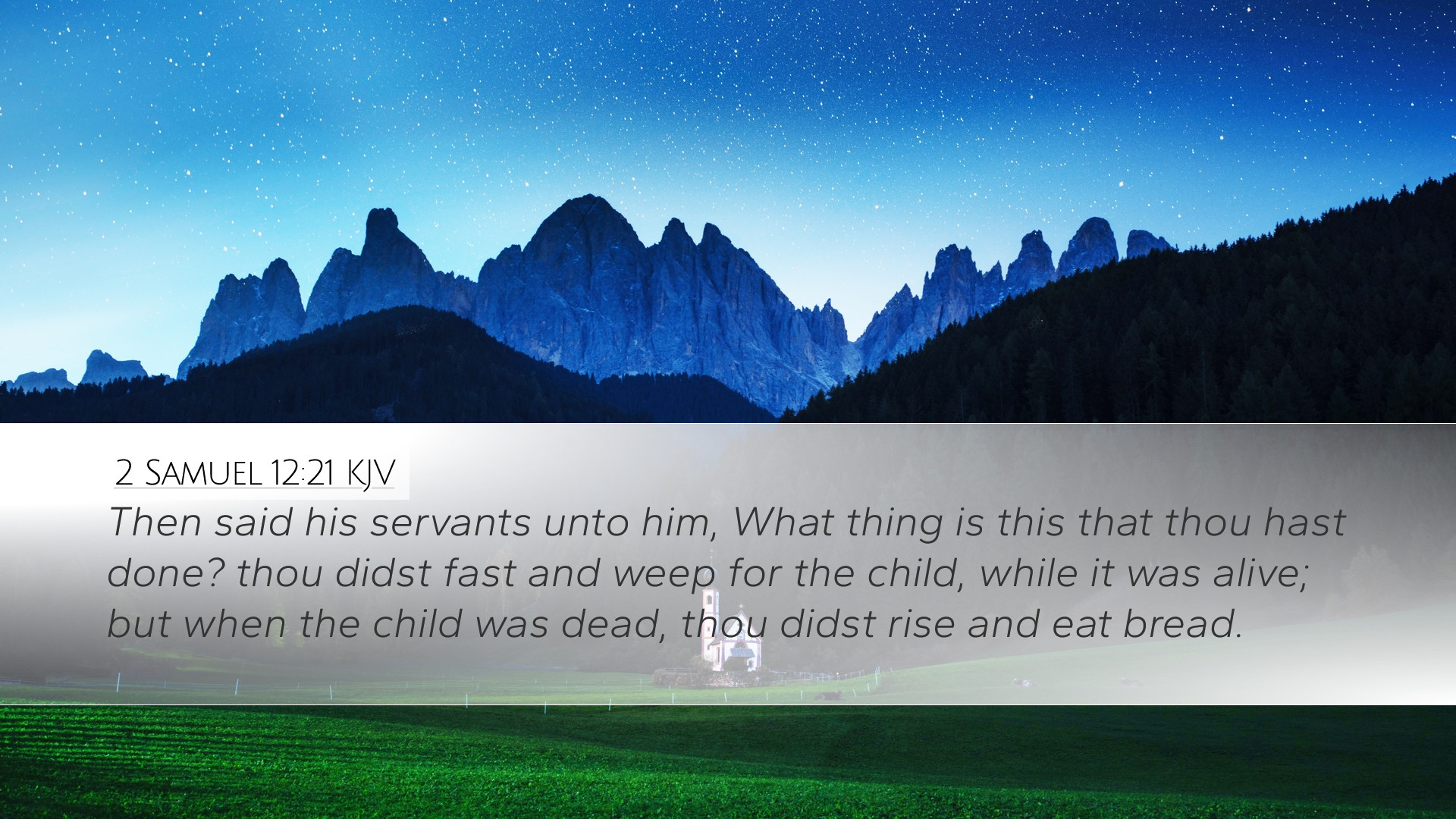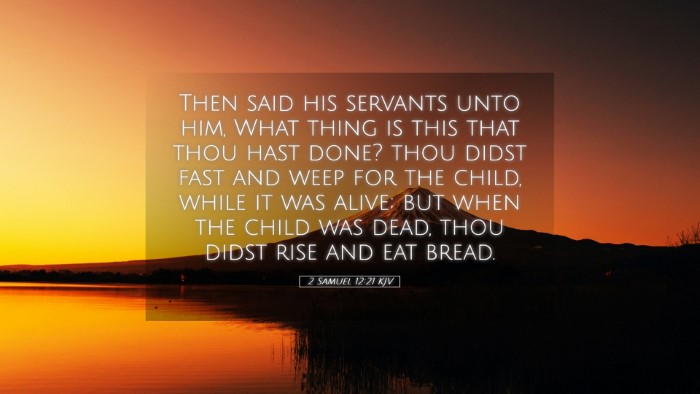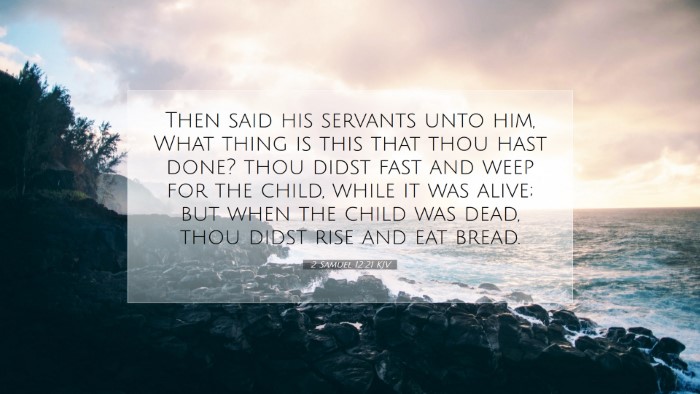Commentary on 2 Samuel 12:21
Verse: 2 Samuel 12:21
“Then said his servants unto him, What thing is this that thou hast done? thou didst fast and weep for the child, while it was alive; but when the child was dead, thou didst rise and eat bread.”
Contextual Background
This verse occurs in the narrative of King David following the death of his infant child, who was born from his adulterous relationship with Bathsheba. Nathan the prophet had delivered a heavy message of judgment to David, proclaiming that due to his sin, the child would die. This event serves as a pivotal point in David's life, representing both the severity of sin and the profound grace of God.
Exegesis and Analysis
The servants around David expressed confusion and astonishment at his behavior. Their inquiry reflects an inherent human logic concerning grief and response to loss.
Matthew Henry's Insights
Matthew Henry emphasizes the sorrow of David and the reasons behind his initial mourning during the child's illness. He wrote:
“While the child was alive, David fasted and prayed, hoping for mercy and restoration. His actions illustrate a heart aligned with the gravity of the situation, reflecting profound concern for the child's well-being.”
Upon the child's death, however, Henry notes:
“David's actions changed remarkably; he rose, washed, and ate, signifying a transition from despair to acceptance. He recognized that his mourning could not alter the sovereign will of God.”
Albert Barnes' Reflections
Albert Barnes provides an analysis of the servants' interrogation as a reflection of societal norms regarding mourning:
“In the ancient Near East, it was customary to mourn openly for the loss of a loved one. The servants’ confusion may represent a stricter adherence to societal expectations of grief, contrasting with David’s resolute acceptance of divine judgment.”
Barnes further elaborates on David's response:
“David’s actions reveal a profound understanding of God’s will. He recognized that once the child had passed, there was no reason for further fasting—his grief had a season, and once God had spoken through the events, David’s response pivots to worship and acceptance.”
Adam Clarke's Commentary
Adam Clarke delves into the psychological and spiritual aspects of David’s reaction:
“David’s fasting was a symbol of deep intercession; however, once the outcome was determined, he understood the futility of further mourning. His subsequent actions demonstrate a capacity for resilience and faith in God’s greater plan.”
Clarke also points out:
“He understood the principles of repentance and divine grace. David’s emotional journey mirrors the complexities of human sorrow in the face of loss, yet it culminates in a return to duty and the acknowledgment of God's mercy.”
Theological Implications
The incident presents significant theological insights regarding sin, judgment, and the nature of God's grace:
- Divine Justice and Mercy: David's initial sorrow represents the weight of sin and the associated consequences. However, the acceptance of God's judgment speaks to a greater narrative of redemption abundant throughout Scripture.
- The Nature of Mourning: The inconsistency between David’s behavior and societal expectations highlights the individual nature of grief and the personal relationship each believer has with God.
- Hope Beyond Loss: David's response after the child's death demonstrates a profound hope in God's sovereignty. This teaches that while loss is painful, it does not preclude a future filled with hope and purpose in God’s plan.
Practical Applications
For pastors, students, and theologians, this verse provides rich ground for pastoral care, counseling, and teaching:
- Encouragement in Grief: Understanding the phases of mourning can aid in ministering to those experiencing loss, emphasizing the personal journey of grief rather than societal expectations.
- Service: The Role of Prayer: David's initial fervent prayer serves as a reminder of the power of intercession, encouraging believers to seek God earnestly in their own trials.
- Resilience in Faith: David's subsequent actions challenge believers to find strength and resilience in God’s plans, reframing their understanding of grief and acceptance.
Conclusion
2 Samuel 12:21 reflects a profound display of human emotion, divine sovereignty, and the intricate relationship between sin and grace. Through the lens of various biblical commentators, we discover rich insights that resonate throughout the ages, providing comfort, challenge, and wisdom for all who seek to understand the heart of God amidst life’s trials.


